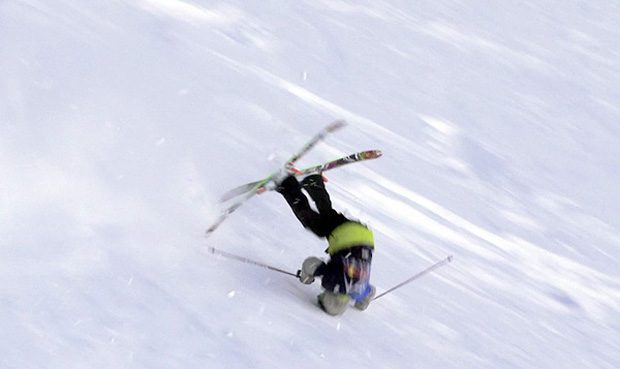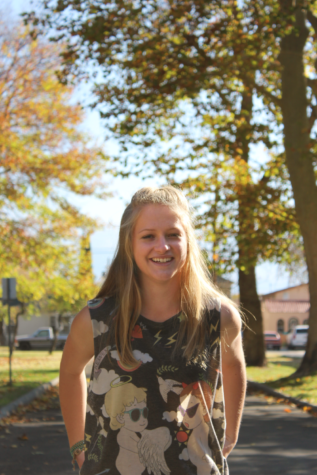Basic Terrain Park Safety: How to Not Be a Jerry
January 20, 2017
Imagine.
The sun is shining, the snow is twinkling, and the breeze is nonexistent. You stand above the terrain park, ski poles in hand and your trusty fanny pack loyally strapped to your hips. Your friends are downhill, near the base of the twenty foot jump that is the main feature of the park.
As your friends gleefully call out to you, and as the sun’s warmth penetrates your obnoxiously neon green snowsuit, you are suddenly filled with enthusiasm, and point your skis straight for the jump.
You can feel the wind rushing through your hair (who needs a helmet?) and the snow running along the bottoms of your hastily waxed rental skis. You near the jump – excitement builds, your adrenaline has maxed out – you are speeding to the lip of the jump – there is a flash of color, a yell – and the next thing you know, you have collided with the skier who had the right-of-way to hit the jump. Now, having double-ejected, you are both cartwheeling through the air, screaming with fear, embarrassment, and anxiety.
Time slows down. For a second, time has almost stopped. Your fanny pack floats into your vision, and you realize: you are a Jerry.
According to Jerry of the Day, an Instagram account dedicated to documenting the Jerries of the world, a Jerry is a person “who exhibits a true lack of understanding for their sport, or for life in general.” We’ve all been a Jerry at some point in our lives, and although you might be an incredible skier or snowboarder who has all the tricks in the bag, if you don’t know the basic safety skills of the mountain, you’re still a Jerry.
Don’t be a Jerry.
When it comes to terrain parks, they can often be crowded and features tend to be a little dangerous. The National Ski Areas Association, Burton Snowboards, and two other snow sports associations have developed a smart mnemonic device to help everyone to remember park safety and etiquette. The mnemonic device is an acronym – and it really is SMART.
Start small: It is important to start out at a comfortable, less-consequence level. Starting out on the baby jumps on Chair 11 might be embarrassing, but it is much safer, and will ultimately help you to progress towards bigger features.
Make a plan: Determine which features you are going to hit and what you will be doing on them. Not knowing which feature or which trick could lead to confusion and collisions, bad habits, and injuries.
Always look before you drop: Know what is around you – are there lots of people? Obstacles like trees or rocks to the side of your line? Is anyone skiing or boarding behind you? When it comes to observations to keep you safe, ignorance is NOT bliss. (Note: it is also safe and courteous to call out when you are about to hit a feature so others know you are dropping.)
Respect: Respect others by giving them space, using park etiquette, offering help if they have fallen, and valuing their safety by not doing anything too sketchy too close.
Take it easy: If it is your first day snowboarding ever, don’t attempt double backflips off of the twelve-footer in Forest Trail. Even if you have been skiing or riding most of your life, it is still important to know what you are capable of, and not to push those limits. The consequence of injuring yourself or another person is not worth it.
Be smart. Wear a helmet. And please, please don’t be a Jerry.




Jeniffer Velazquez • Jan 27, 2017 at 11:54 pm
tag yourself, I’m Jerry